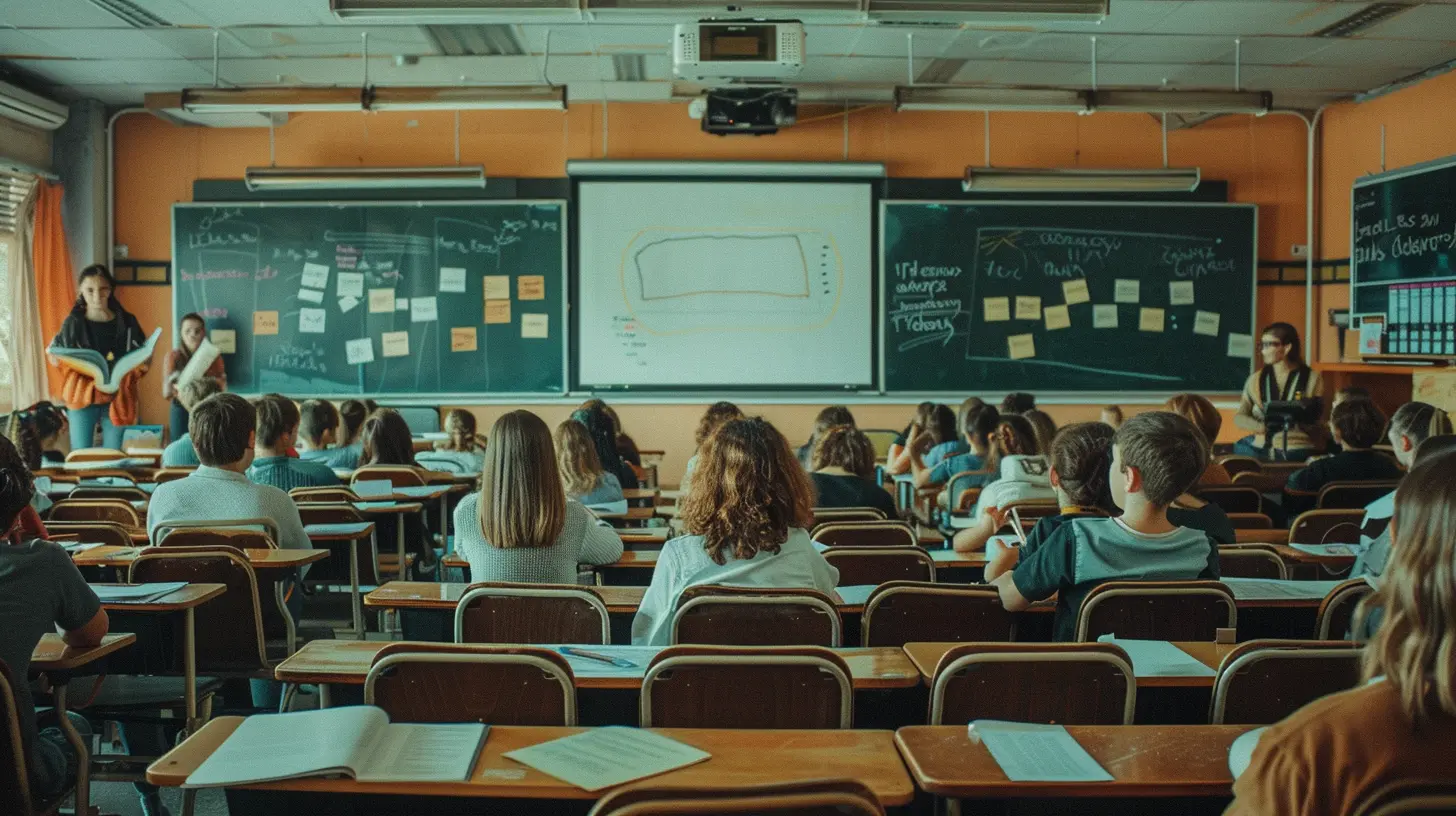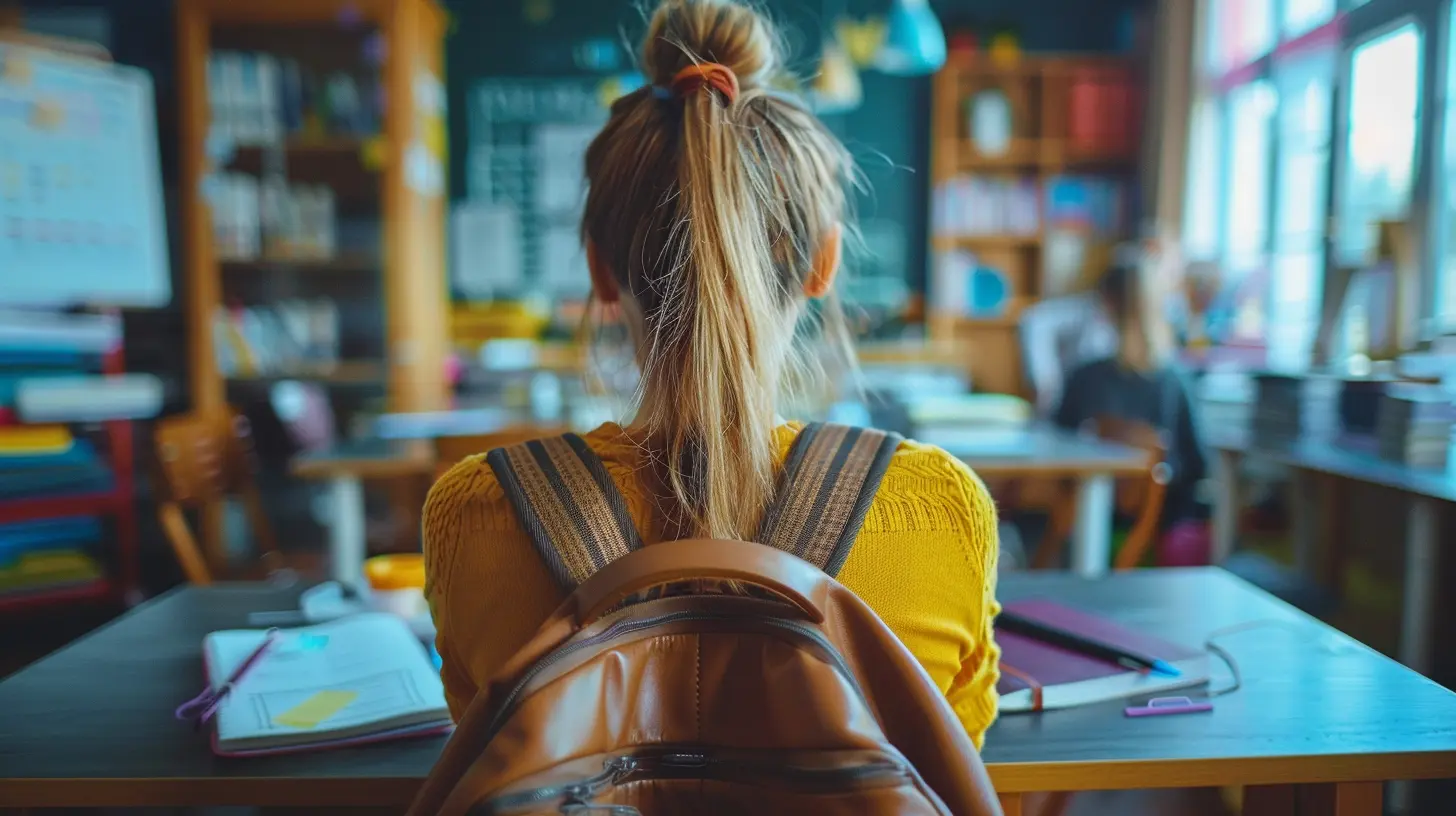24 April 2025
The flipped classroom model is shaking up traditional education, putting more responsibility on students to engage with lessons outside the classroom and reserving in-class time for interactive, hands-on learning. But one crucial element that keeps this system running smoothly? Teacher feedback.
Without consistent, meaningful feedback, a flipped classroom can quickly turn into a confusing maze where students feel lost. So, how exactly does teacher feedback play a role in this innovative learning approach? Let’s break it down.

Understanding the Flipped Classroom
Before we dive into feedback, let's get on the same page about what a flipped classroom actually is. Unlike the traditional model where teachers introduce new topics in class and assign homework for reinforcement, a flipped classroom flips the script.How It Works:
1. Pre-Class Learning – Students watch video lectures, read materials, or complete interactive modules at home.2. In-Class Activities – Instead of passive lectures, class time is used for discussions, problem-solving, projects, or group work.
3. Teacher Support – Teachers act as facilitators, guiding students through activities and addressing individual challenges.
This model allows students to engage with course material at their own pace. However, without proper guidance and feedback, it can lead to frustration and disengagement.

Why Teacher Feedback is Essential
Think about learning a new skill, like riding a bike. Imagine if you were left to figure it out on your own without someone encouraging you or pointing out what you’re doing wrong. That’s how students might feel in a flipped classroom without meaningful teacher feedback.1. Clarifies Misconceptions
When students learn at home, they can misinterpret concepts. Without real-time correction, these misunderstandings can snowball. Personalized feedback helps clear up confusion before incorrect ideas become deeply ingrained.2. Keeps Students Motivated
In a self-directed learning setup, motivation can be a challenge. Constructive feedback reminds students that their efforts are recognized and valued. A simple “Great job on identifying the key points, but try to elaborate on X” can do wonders.3. Encourages Deeper Thinking
Good feedback isn’t just about right and wrong—it pushes students to think critically. Instead of just saying “incorrect,” effective teachers ask, “Why do you think this?” and “What if we looked at it from a different angle?”4. Supports Struggling Students
Some students excel in self-paced learning, while others struggle. Timely feedback helps struggling students stay on track. It acts as a safety net, preventing them from falling behind in a system that requires independence.5. Improves Accountability
When students know their work will be reviewed and commented on, they are more likely to put in effort. Feedback creates a sense of accountability, making them feel responsible for their own learning.
Types of Effective Teacher Feedback
Feedback isn’t just about pointing out mistakes—it shapes the entire learning experience. But what kind of feedback is most effective in a flipped classroom?1. Timely Feedback
Imagine submitting an assignment and waiting weeks for feedback. By the time you get a response, you've likely moved on. In a flipped classroom, immediate or near-immediate feedback is critical for keeping momentum.2. Specific Feedback
Vague comments like “Good job” or “Needs improvement” don’t provide much direction. Instead, quality feedback is specific:- 🔍 Example of weak feedback: “Your argument needs more development.”
- ✅ Better feedback: “Your argument is strong, but adding an example from the reading would make it even more persuasive.”
3. Constructive Feedback
Constructive feedback focuses on growth rather than just pointing out mistakes. It helps students understand what they did well and where they need to improve.- Instead of: ❌ “This is incorrect.”
- Try: ✅ “Great effort! However, this concept is slightly misunderstood. Think about it in terms of X…”
4. Encouraging Feedback
Students who struggle with self-directed learning may feel discouraged. Encouraging feedback acknowledges their effort and provides a positive reinforcement loop.- 💡 A powerful example: “I can see how much thought you put into this. While there are a few areas to refine, you're on the right track!”
5. Peer Feedback
Teacher feedback is essential, but peer feedback also plays a valuable role. Encouraging students to critique each other’s work fosters collaboration and reinforces learning.
Best Practices for Providing Teacher Feedback in a Flipped Classroom
Now that we know how important feedback is, how can teachers ensure it’s effective and meaningful?1. Use Digital Tools for Feedback
In a flipped classroom, technology is king. Digital platforms like Google Classroom, Edmodo, or feedback tools like Mote allow teachers to provide real-time feedback on assignments and discussions.2. Provide Audio & Video Feedback
Not all feedback has to be written. Tools like Loom or Vocaroo let teachers send personalized audio or video feedback, making the interaction feel more human and engaging.3. Encourage Two-Way Feedback
Feedback shouldn’t be one-sided. Encourage students to respond, ask for clarification, and even self-reflect on their performance. This turns feedback into a conversation rather than just criticism.4. Differentiate Feedback for Different Learners
Every student learns differently. While some benefit from direct, to-the-point comments, others need more explanation and encouragement. Tailor feedback to each student’s needs for better outcomes.5. Highlight Strengths First
Before jumping into areas of improvement, acknowledge what students did right. This builds confidence and makes them more receptive to constructive criticism.6. Set Clear Expectations
Students should know what kind of feedback to expect and how to use it. If feedback expectations are vague, they may not take it seriously or know how to apply it.Overcoming Challenges in Giving Feedback
While feedback is crucial, it's not always easy to provide it effectively in a flipped classroom. Let's look at some common hurdles and how to overcome them.1. Time Constraints
Teachers juggle multiple tasks, and providing individual feedback for every student can be time-consuming. Solution? Use automated quizzes for instant feedback where possible, and focus more on detailed feedback for assignments that truly need it.2. Students Ignoring Feedback
Sometimes, students glance at their grades but ignore the feedback. Solution? Require a response—ask students to reflect on the feedback or implement changes in a revision assignment.3. Balancing Positivity and Criticism
Too much criticism can demotivate students, while too much positivity can make them complacent. Solution? Follow the "Feedback Sandwich" approach—start with praise, provide constructive criticism, and end on an encouraging note.Final Thoughts
Teacher feedback is the glue that holds a flipped classroom together. Without it, students may feel lost, unmotivated, or unsure if they’re on the right track. Constructive, timely, and engaging feedback helps students learn more effectively, stay motivated, and develop critical thinking skills.So if you're a teacher navigating the flipped classroom model, remember:
Your feedback isn’t just a commentary—it’s a guiding light that helps students move forward with confidence.




Camille McFarlane
This article effectively highlights the critical importance of teacher feedback in a flipped classroom setting. By emphasizing timely, constructive feedback, educators can enhance student engagement and understanding, ultimately fostering a more effective learning environment. Great insights into the evolving dynamics of modern education!
April 25, 2025 at 8:09 PM